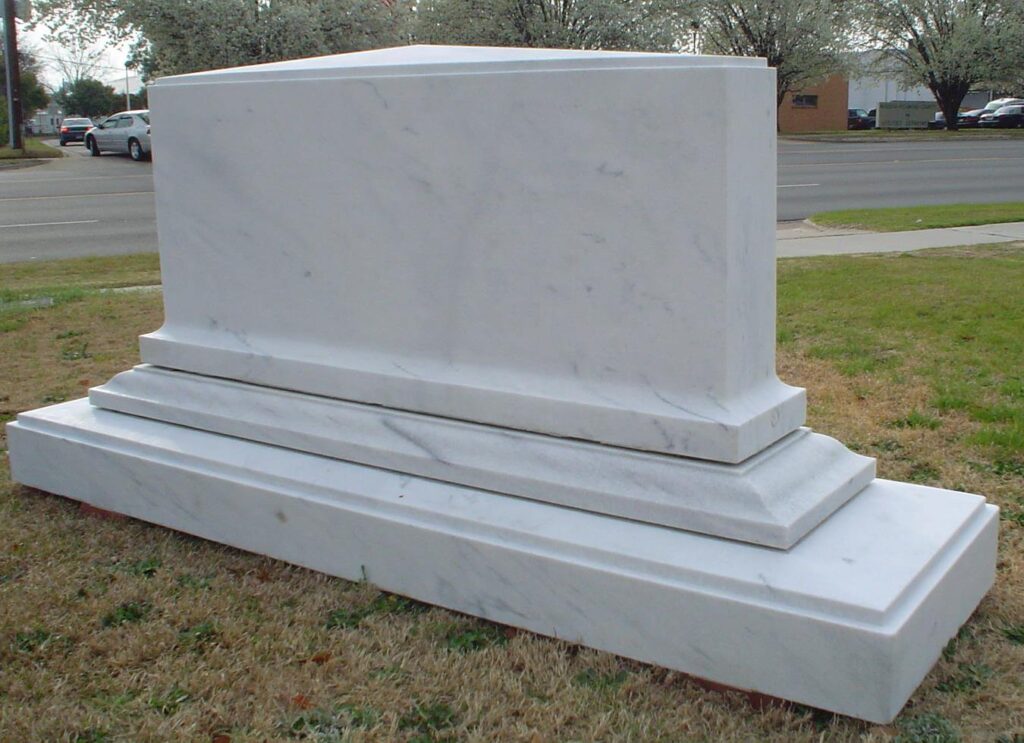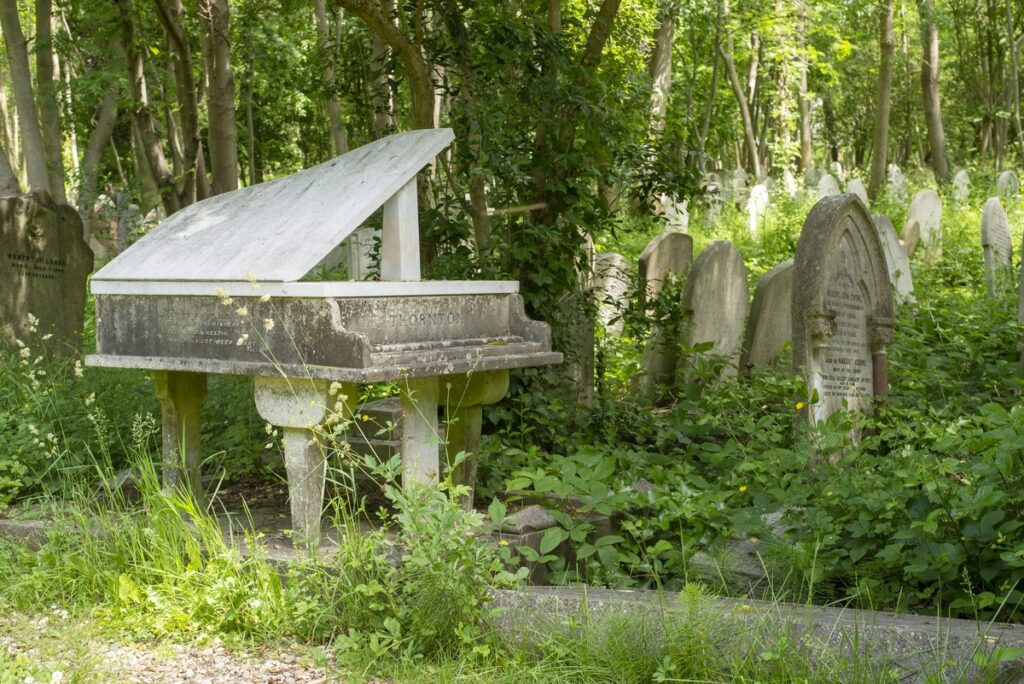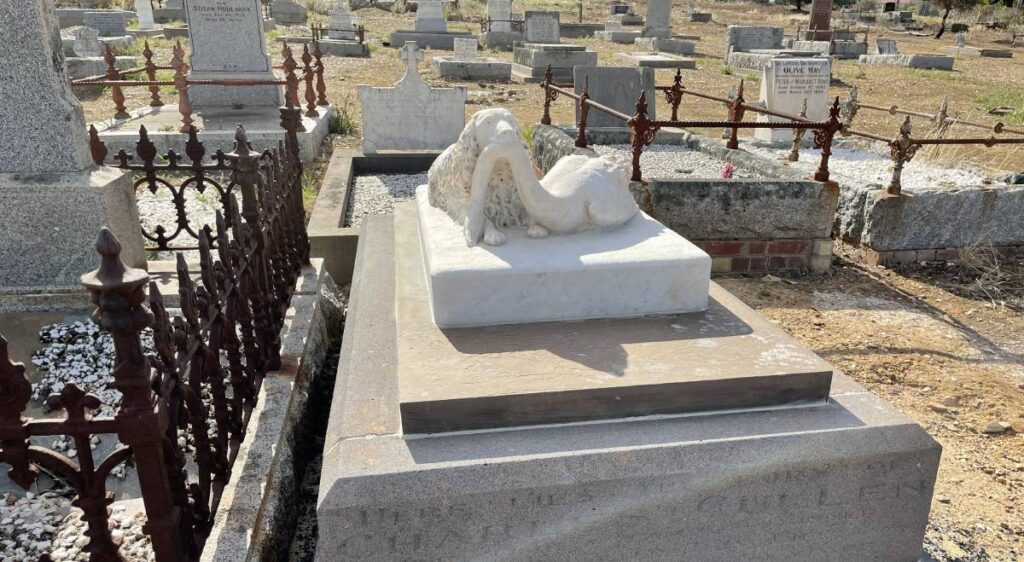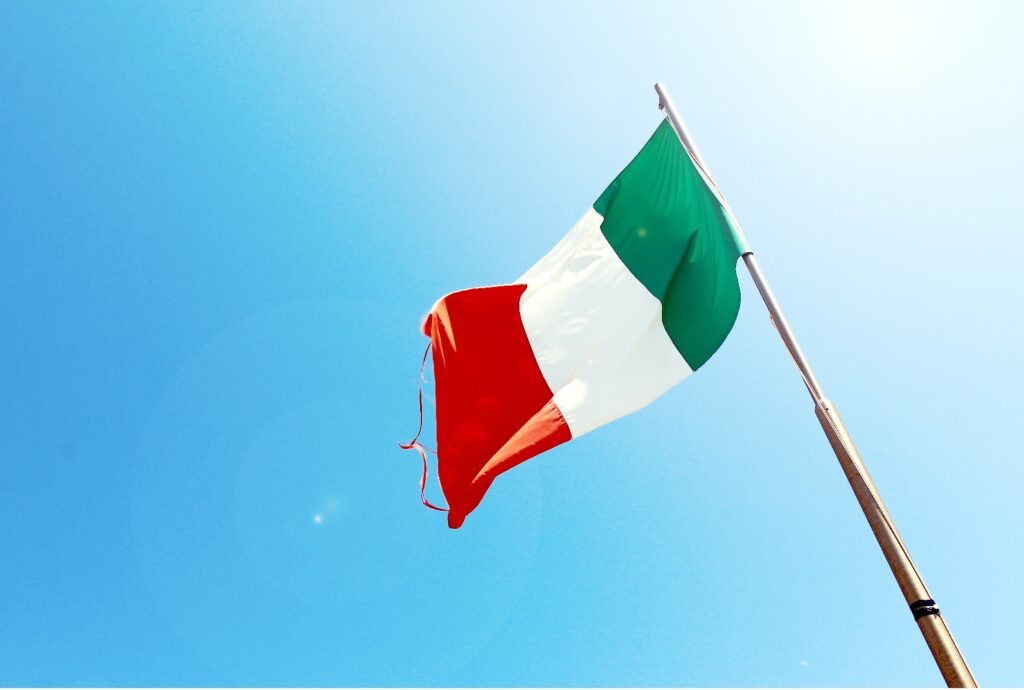In life, there comes a time when we have to bid farewell to our loved ones, leaving us with cherished memories and a deep sense of loss. During this challenging period, headstones play a significant role, serving as lasting symbols of remembrance and celebration of the deceased person’s unique journey.
Yet, gravestones are not merely markers of final resting places. They are also beautiful works of art that reflect the essence of those they commemorate, as well as the everlasting love their families and friends have for them. Throughout this guide, we will explore the world of the most beautiful headstones, from their origins and symbolism to their styles and design process. Let’s dive in!
Understanding the History of Headstones
Headstones have played a vital role in various cultures since the dawn of civilization, reflecting the society members’ beliefs, customs, and even artistic expressions. Let’s take a journey through the history of gravestones to better understand their significance:
Origins and Evolution
The practice of using headstones to mark burial sites dates back thousands of years and has evolved significantly over time.
Ancient civilizations, such as the Egyptians, Greeks, and Romans, practiced burial rituals that often involved placing elaborate markers or stelae at the gravesites of significant individuals. Commoners often had simple or even unmarked graves.
During the medieval period, headstones took on a more Christian symbolism. They typically were relatively simple, often featuring crosses and Latin inscriptions.
Later on, in the Renaissance and Baroque periods, upright headstones became more ornate. Noble and wealthy families would often request artists to create intricate marble or stone monuments that featured detailed carvings, religious symbols, and allegorical representations.
The Victorian era saw a surge in the popularity of headstones, and grave marker designs became even more diverse. They frequently featured angels, urns, crosses, and floral motifs. The epitaph inscriptions on the stones also became more sentimental, often reflecting the grief and mourning of the surviving family members.
In the 20th century, and especially during the Great Depression, headstone designs became more standardized, with a focus on simplicity and durability. Granite and other durable materials replaced the softer stones that were prevalent before.
In modern days, headstones have become more diverse than ever before. While the influence of cultural traditions is still significant in many societies, there is also a growing acceptance of personalization in the way people choose to commemorate their loved ones.
Cultural Differences in Headstone Designs
Tombstones vary significantly across different cultures and regions. Some unique headstone design examples from different parts of the world include:
- Celtic crosses, which are common in Ireland and some parts of the UK. You can recognize them by their distinctive circle intersecting the cross. They also often feature intricate Celtic knotwork, which symbolizes eternity and the interconnectedness of life and death.
- Buddhist stupas, which are tall, thin pillars typically made of wood or stone and adorned with inscriptions and religious symbols. They serve as memorials to honor the departed across many Asian nations, including India, Japan, and Nepal.
- Chinese tombstones that can be large, impressive structures made of stone, often looking like miniature buildings or temples. These gravestones are inscribed with the name and achievements of the deceased, along with symbols of longevity and prosperity.
- Maori headstones in New Zealand, which typically feature national carvings known as “whakairo”. They are symbolic and often tell a story of the passed person’s genealogy, achievements, and cultural heritage.
- Jewish matzevot headstones that are usually minimalistic, unadorned stones with Hebrew inscriptions laid flat on the ground.
- Islamic headstones, which tend to be modest and have inscriptions in Arabic, often featuring verses from the Quran.
- Native American burial markers that vary depending on the tribe. They can appear as large rocks, wooden markers, or even wooden grave houses, each reflecting the specific tribe’s cultural and spiritual beliefs.
- Modern Western headstones, ranging from traditional granite tombstones to more artistic monuments. Some families opt for customized designs that incorporate images, engravings, and symbols representing the deceased’s interests or passions.
The list goes on!
Types of Headstone Materials
The popularity of headstone materials is influenced by factors like aesthetic appeal, durability, and even current trends. Here are some of the most widely used options:
Granite

Granite is one of the most popular headstone materials due to its impressive durability and visual appeal. Each stone features a unique mineral pattern and can come in hues of black, gray, pink, red, or even blue, which ensures the headstone’s distinctive appearance. What’s more, this material is highly resistant to weathering, making it a long-lasting option for grave markers and granite statues.
Marble

Marble is a metamorphic rock known for its elegance and classic appearance. It features a smooth surface with soft veining patterns, which gives it a timeless and refined aesthetic.
Yet, although marble is visually stunning, it is not as durable as granite and can show signs of wear over time, especially when exposed to harsh weather conditions. Due to this, it is most commonly used for indoor memorials.
Sandstone, Slate, and Limestone

These three materials are sedimentary rocks, each with its unique characteristics:
- Sandstone provides a warm and rustic look and offers a variety of textures.
- Slate is smooth and dark-colored, creating an elegant yet somber look
- Limestone comes in different hues and offers a softer, more delicate appearance
These materials are often affordable yet tend to be less durable than granite and marble.
Bronze

Bronze is a metal that has impressive resistance to weathering, which makes it suitable for outdoor use. While initially, bronze headstones come in a dark brown color with tinges of orange, they develop a natural patina over time, which enhances their visual appeal.
The Art and Symbolism in Headstone Designs
Headstone designs are diverse and deeply personal, reflecting the beliefs, values, and memories of those who have passed away. Let’s take a closer look at some of the art and symbolism that people choose to commemorate their passed loved ones with:
Common Symbols and Their Meanings
Some of the most common types of symbols that one may encounter at cemeteries include:
- Doves. These birds are a widely recognized symbol of peace, purity, and innocence. In the cemetery memorial context, they usually represent the soul’s release from the physical body and its journey to the afterlife or heaven. This image can also symbolize the Holy Spirit in Christian traditions.
- Flowers. Different types of flowers on headstones can carry various meanings. Roses usually stand for love and beauty, lilies – for purity and resurrection, and daffodils – for rebirth or new beginnings. The choice of flower can also be attributed to personal preferences or religious beliefs.
- Hands. Different gestures depicted on the gravestones convey distinct messages. Clasped hands typically symbolize farewell and eternal reunion, while an open hand may signify God extending an invitation to the departed soul.
- Crosses. The cross is a common symbol in Christian cemeteries. It represents faith, redemption, and belief in the resurrection of Jesus Christ.
- Angels. These celestial beings are thought to act as messengers between heaven and earth. They symbolize protection, guidance, and the divine presence. An angel with folded wings indicates peace and rest, while a flying one may reflect the soul’s journey to heaven. A shrouded figure of a weeping angel means grief, sorrow, and mourning.
Unique and Unusual Symbolism
Sometimes, a person’s final resting place can feature unexpected design options and symbols, such as:
- Hourglasses. An hourglass image symbolizes the passage of time and the inevitability of death.
- Anchors. These are symbols of hope, often associated with sailors who wish to reach a safe harbor. On headstones, such a detail can represent the deceased finding refuge and peace in the afterlife.
- Broken columns. A broken column represents a life cut short, typically that of a young person or someone who died suddenly.
- Books. It may represent the Book of Life, which is a concept in present across various religious beliefs. This book holds the record of a person’s deeds for the judgment of their soul in the afterlife.
- Skulls and crossbones. In some cases, this symbol is a reminder of the inevitability of death, while in others, it signifies the deceased person’s former membership in a secret society or military group.
All of these symbols have a story behind them and invite people to contemplate the mysteries of life and mortality.
Showcasing The Most Beautiful Headstones
From the classic elegance of European statues to the symbolic charm of Asian engravings, headstones around the world demonstrate the diverse ways cultures express love for the departed. Take a look at some of the most memorable headstones and memorials from across the globe:
Outstanding Headstones in America
These gravestones located in the USA won’t leave you indifferent:
Matthew Stanford Robison’s Grave

This unique monument at Salt Lake City Cemetery shows a young boy joyfully leaping out of his wheelchair. Matthew, who faced multiple disabilities from birth, found freedom in this sculpture, lovingly crafted by his father.
Boy in the Boat Statue

The enchanting statue depicts a young boy seated in a rowboat and has been preserved within glass for over 150 years. Even after all this time, someone still brings fresh flowers to this grave at Forest Hills Cemetery.
John F. Dillon’s Grave

It is not often that a person designs their own tombstone, yet this is the case for the graves of John F. Dillon. He is buried together with his loved ones on their family plot at Rosehill Cemetery.
Hi Jolly Monument

This eye-catching grave in Arizona is dedicated to Hadji Ali, known as “Hi Jolly”. He was the first member of the experimental Army Camel Corps, which is why the stony pyramid monument features an etched metal camel on top.
Europe’s Most Stunning Headstones
Here are some memorable headstones from Europe that are as beautiful as they are touching:
Anna Clare Bootle’s Grave

This grave is marked by a touching stone sculpture depicting a serene sleeping cat on a tasseled pillow.
Under the formal inscription with the family name and life dates on this gravestone at London’s Highgate Cemetery, one will see a captivating hand etching that reads: “The beautiful cat endures”. This phrase likely draws inspiration from an ancient commemorative stone discovered in Thebes, Egypt, dating back nearly 3,000 years.
Caroline Walter’s Grave

In 1867, 17-year-old Caroline Christine Walter passed away from tuberculosis. Her sister Selma commissioned a striking memorial for the Old Cemetery in Germany, depicting her peacefully asleep while reading. The open book bears the words, “It is certain in God’s wisdom that from our dearest loved one we must part”.
Harry Thornton’s Grave

This monument is a tribute to Harry Thornton, a young pianist renowned for uplifting the spirits of troops during WWI with his music. In honor of his talent and spirit, his loved ones and admirers immortalized him with a captivating stone rendition of a baby grand piano.
Colonel van Gorcum’s and Lady van Aefferden’s Graves

More than 150 years after their death, Colonel van Gorcum and his wife, Lady van Aefferden, still hold hands. Their marriage was scandalous due to religious and social differences, but even in death, their love remains evident. Colonel van Gorcum rests in the Limburg Protestant cemetery, while Lady van Aefferden chose a spot by the wall dividing the cemeteries to be as close to him as possible.
Rudolf Nureyev’s Grave

Rudolf Nureyev’s headstone at Sainte-Geneviève-des-Bois Cemetery in France is unique and unconventional, as it takes the form of a mosaic carpet. Inspired by his love for the arts and his Central Asian heritage, the gravestone features vibrant colors and detailed patterns.
Beautiful Headstones from Asia
Here are some examples of impressive tombstones from Asian countries:
Kulpitas Tombstones

Kulpitas is a traditional grave marker used by the Kazakh people. It usually appears as a large stone structure, often intricately carved with symbolic designs and patterns. You can find these elaborate upright monuments in cemeteries and burial grounds across the country.
Usually, you won’t find the name of the deceased directly on a kulpitas. Instead, it might be on a separate plaque or stone nearby.
Vo Thi Sau Grave

Vo Thi Sau, the courageous martyr and heroine, was born in 1933 and made a significant impact on the revolution at the young age of 14, quickly gaining fame for her bravery. She is buried in Con Dao, Vietnam, where her grave is marked by a striking and simple black gravestone in a circular shape.
Teresa Teng’s Grave

Teresa Teng was a highly acclaimed and beloved Taiwanese singer, and her grave at the Chin Pao San Cemetery in New Taipei City, Taiwan, has become a place of pilgrimage for her fans and admirers from around the world. Her gravestone features her face and arm as if the singer was leaning on the granite.
Unique Headstones from Around the World
This list would not be complete without these gravestone examples from other parts of the world:
Chichicastenango Tombstones

Chichicastenango, a town in Guatemala with a rich indigenous culture, has a cemetery famous for its unique and colorful gravestones. According to local beliefs, death is seen as a continuation of life rather than its end, which is why vibrant colors are used to celebrate it.
The Dog and the Duck

This memorial features a curly retriever holding a swan in its mouth. It stands at the Australian Bendigo cemetery, commemorating Charles Cullen, a renowned runner from Eaglehawk.
John Torrington’s Grave Marker

John Torrington was a member of Sir John Franklin’s final expedition of 1845, which set out to explore the Northwest Passage in the Arctic. His grave is located at Beechey Island in the Canadian Arctic and appears as a simple wooden board with a metallic plate, making it appear humble yet thought-provoking.
The Process of Creating a Custom Headstone
Now that you have seen the various ways in which people commemorate those they’ve lost, let’s delve into the process of designing a custom headstone or monument. It usually consists of several steps, namely:
Understanding Local Cemetery Rules
Before embarking on creating a custom headstone, it’s crucial to familiarize yourself with the specific rules imposed by the specific cemetery. For instance, it is sometimes not possible to place large monuments or upright headstones in military graveyards.
Gathering Inspiration
Once you know the gravesite guidelines, you can start gathering inspiration. There are plenty of sources where you can find references for custom monuments, such as online galleries and headstone catalogs. You can also think of personal anecdotes to come up with a meaningful and unique design idea.
Choosing the Right Material and Design
Selecting the appropriate material is essential as it impacts the headstone’s durability and appearance. Look through the various ideas and tips we listed above to make an informed choice!
Working with a Stonemason or Artist
Just as it is crucial to find a good casket maker, collaborating with a skilled stonemason will help you bring the custom headstone vision to life. They possess the expertise and craftsmanship necessary to translate your ideas into a beautiful and lasting memorial that honors your loved one.
The Future of Headstones: Trends and Innovations

As society evolves, the concept of traditional burial practices and headstones also keeps shifting.
For instance, there has been a growing interest in eco-friendly burials in recent years, leading to the development of environmentally sustainable headstones. Learn how you can plant a tree in memory of someone, which will be a living tribute benefitting future generations!
Besides, thanks to technological progress, digital headstones have emerged as a new concept. These gravestones incorporate digital screens that display photos, videos, and other digital content related to the deceased. They can also feature QR codes that grant access to a personalized digital memorial, offering a dynamic and immersive way to remember the deceased.
What’s more, virtual memorials are also becoming increasingly popular. Online memorial websites allow people to create digital tributes and share memories.
Notably, the growing popularity of online memorial websites and digital tributes has not only made it easier for those in mourning to connect but has also made finding burial records a lot more convenient.
Final Thoughts: Memories Live On
As you can see, tombstones are way more than just grave markers. Years go by, yet these memorials stand as silent witnesses to the shared human experience of love, loss, and the eternal hope for a meaningful legacy. Let us remember and appreciate the artistry in headstones and celebrate life!
FAQ
What color headstone lasts the longest?
Black or gray gravestones tend to last the longest as they are less prone to discoloration and weathering. However, the headstone’s lasting appeal mainly depends on its material.
What is the best color for a headstone?
It is completely up to personal preference. However, black, gray, and other dark colors are some of the top choices due to their timeless and elegant appearance.
What is the most expensive granite for a headstone?
Blue Pearl granite is one of the most expensive choices for a headstone due to its rarity and unique appearance.
What is the best material for a grave headstone?
Granite is widely regarded as the best material for a grave headstone due to its durability, low maintenance, and beauty.
What is the difference between a headstone and a tombstone?
You can use the terms “headstone” and “tombstone” interchangeably, as there is no significant difference between them.
What type of headstone is best?
The best type of headstone is one that captures the essence of the deceased and their loved ones’ feelings.
What are the most durable headstones?
Granite and bronze headstones are among the most durable options, capable of withstanding harsh weather conditions and the test of time.


